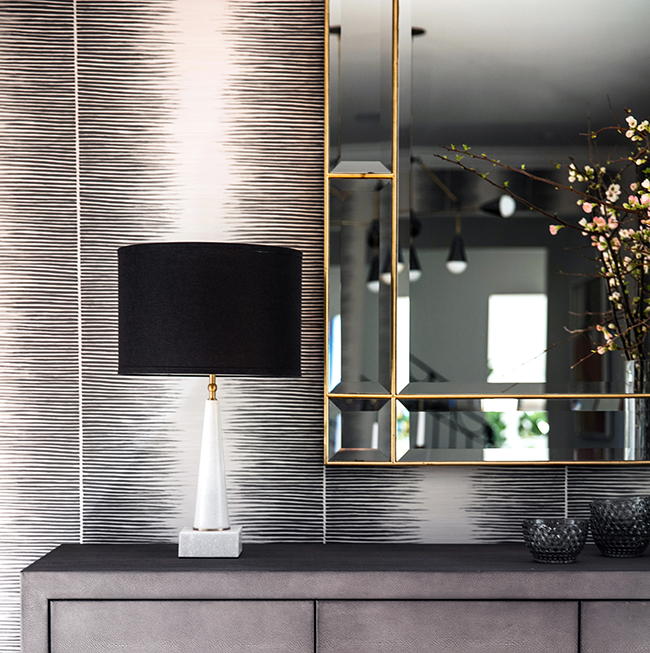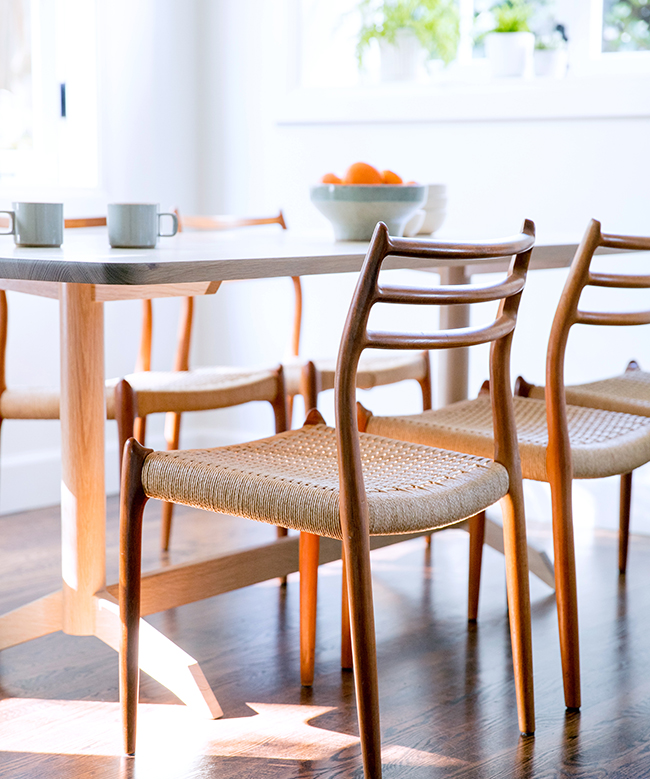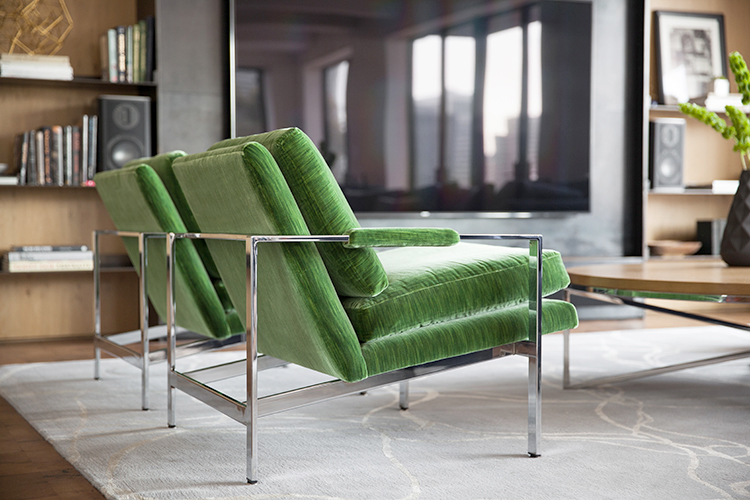Designer Guide: Shopping for Vintage Furniture
Incorporating vintage furniture, lighting and accessories into your home is a great way to add character and layers to a space. Even just one vintage lamp or mirror can bring just the right amount of interest to a room! There are many reasons our San Francisco interior design team loves vintage, from the longevity/quality of pieces to the environmental benefits.

Furniture construction and fabrication techniques have evolved over time in response to changes in materials, technology, and design trends. Here are some of the key differences between furniture made in the last century and mass produced, retail furniture of today.
Vintage + Antique Furniture
- Hand-crafted: Furniture in the 1900s was often made by hand, using traditional techniques such as mortise and tenon joinery, dovetail joints, and hand-carving. This meant that each piece was unique and reflected the skill and craftsmanship of the maker.
- Solid wood construction: Vintage furniture was often made from solid wood, which was prized for its durability and natural beauty. This was particularly true for high-quality pieces such as tables, chairs, and cabinets.
Mass Produced Furniture Today
- Machine-made: Furniture today is often mass-produced using machines and assembly-line techniques. This allows for faster production and lower costs, but may result in a less unique and personalized product.
- Manufactured wood: Furniture today may be made from manufactured wood products such as plywood, particleboard, or MDF, which are less expensive than solid wood but may not be as durable or long-lasting.
Incorporating vintage furniture into the interior design of your home has a number of environmental benefits that make it a sustainable and eco-friendly choice. The following are some of the key environmental benefits of buying vintage furniture.

Environmental Benefits of Using Vintage Furniture in Your Home
Reduces waste
By purchasing vintage furniture, you are diverting items from the landfill and reducing waste. When furniture is discarded, it can take years to decompose, and in the process, it can release harmful chemicals into the environment. By giving old furniture a new lease on life, you are reducing waste and helping to preserve natural resources.
Lowers carbon footprint
The production and transportation of new furniture can have a significant impact on the environment, from the use of energy and water to the emission of greenhouse gases. By shopping for vintage furniture, you are reducing the carbon footprint associated with the production and transportation of new furniture.
Saves resources
Manufacturing new furniture requires a significant amount of resources, including wood, metal, and energy. The production of new furniture often requires the harvesting of wood from forests and other ecosystems. By purchasing vintage furniture, you are saving these resources and reducing the demand for new materials to be harvested and produced.
Another bonus – shopping vintage is instant gratification! As supply chain issues and COVID-related production delays in the interior design industry persist, vintage pieces can be a lifesaver when you just need one last thing to complete a project. The learning curve to shopping for vintage furniture can seem daunting, so we put together our San Francisco interior designer guide for shopping locally and online.
Shopping Local
I always start by perusing local vintage and antique shops in the San Francisco Bay Area to see if they have what I am looking for – our previous post covers some of our favorite San Francisco Bay Area Vintage Furniture Shops. Local flea markets are a great way to see inventory from lots of vendors and to snag amazing deals that you can’t find online. The Oakland Vintage Market and the Alameda Antiques Faire both take place on the first weekend of every month and feature a variety of vendors and price points. On the hunt for mid-century modern furniture and artwork? Start at the Oakland Market which has a smaller, curated list of high quality vendors specializing in mid-century and contemporary design.
Pro Tips
• Arrive early with plenty of cash (and a Venmo account), a measuring tape and comfortable shoes!
• Make a list of the pieces you are looking for along with their ideal dimensions. This will help you stay on track and quickly assess whether a furniture piece will work in your home.
• If you find a must-have item ACT FAST! There are no holds. Flea market etiquette dictates that if you put down an item before paying for it, all bets are off.
• Ask the seller what they know about a piece, where they purchased it, how old it is etc. Don’t assume that everything you find is vintage, there are many reproductions and knock-offs to be found at flea markets. Flip over a piece and look inside the drawers for a maker’s stamp or label.
• Considering buying an upholstered chair or sofa? Try picking it up to see how heavy it is. Higher quality upholstery has kiln dried wood frames which are much heavier than cheaper alternatives.

Shopping Online
The biggest benefit to shopping online is the abundance of options and the ability to find a specific collectable piece. 1st Dibs and Chairish are the top two sites we shop for our interior design clients.
Pro Tips from a San Francisco Interior Designer
• Check where the seller is located. The closer the better, not only for reducing the carbon footprint and shipping costs, but the item is less likely to get damaged in transit on shorter trips.
• Inspect all items as soon as they arrive and if possible note any damages with the shipping carrier. This will make it much easier to hold the seller accountable and to get reimbursed for any necessary repairs.
• Ask about whether the item comes from a smoking or non-smoking home. This is especially important for upholstered items but also applies to wood furniture since wood can also absorb smells
• Beware of terms in title such as “In the style of” or “mid-century modern style” which can be a subtle way of saying that the furniture piece is not an actual vintage item and is instead a new reproduction or knock-off.
• Don’t be afraid to ask for more photos, especially if the photos are poor quality or blurry. Ask questions about any damages and be sure to specifically ask if the piece is structurally sound.
Need some inspiration on how to incorporate vintage finds into your own home? Take a peek at our collection of Art + Styling photos from our San Francisco Interior Design projects!
